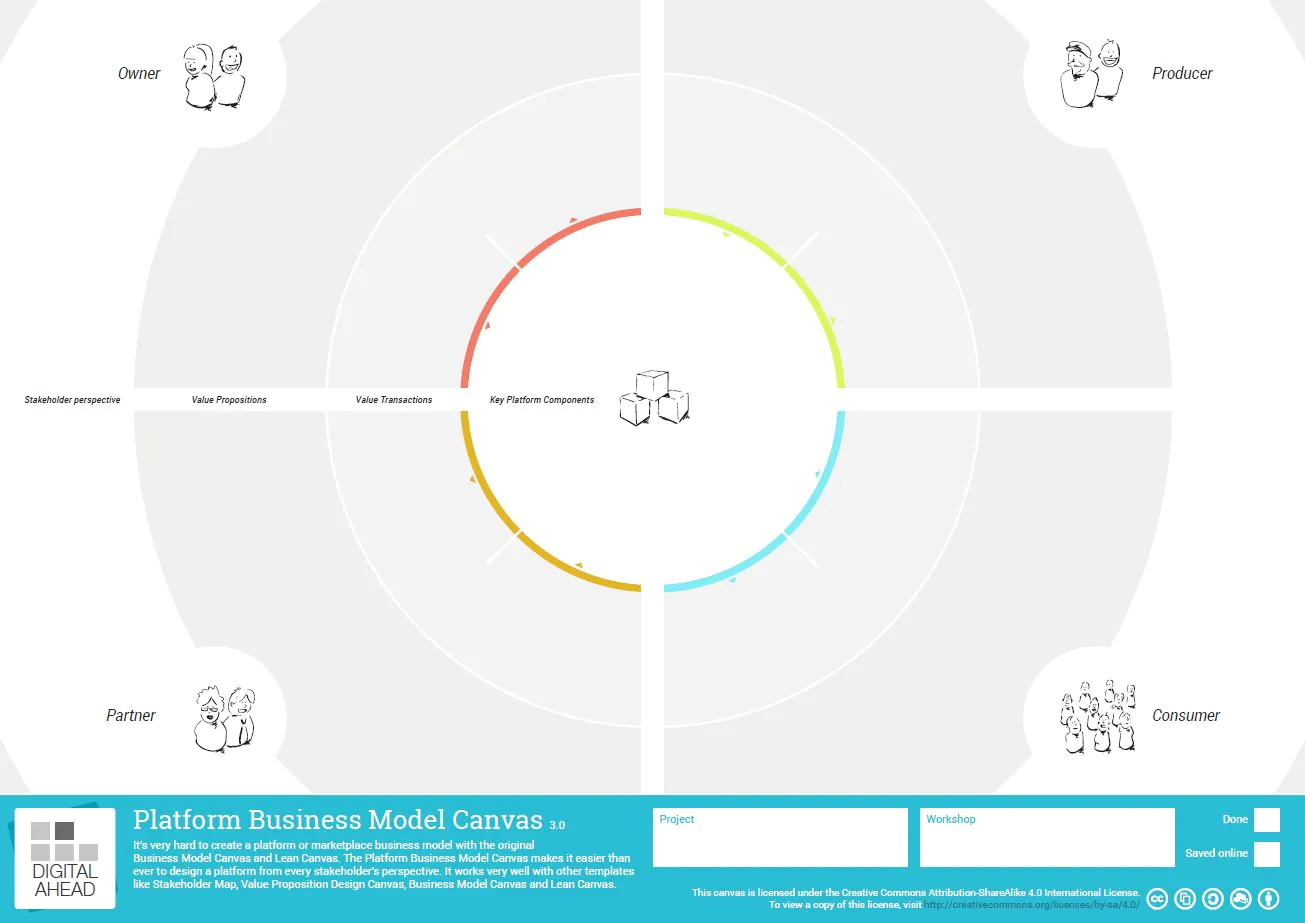Your Business Model Innovation
Is business model innovation in technology or industrial companies your big challenge? We can help.

Innovation and future orientation are essential for companies in all industries. New technologies and patents, future products, innovative processes and services. All this is well known to industrial companies. But business model innovation? Why should companies now also pursue business model innovation? One answer is as trivial as it is far-reaching: Because everyone is doing it! Business model innovation is becoming mainstream. For the big players, in particular, this is increasingly becoming part of their operating routine. Granted, that alone is not a sufficient argument for pursuing this. The important factor is its recognized added value for the customer. New approaches to a company’s business model create added value that can hardly be matched by any products, technologies and services alone. The best taxi equipped with leather seats, USB charger and scented tree has a hard time competing today. I can order a car now with three clicks. Uber sends a vehicle within 30 seconds. And the ride costs only half of what a taxi costs, because I just ride along with someone who is already on the way to the airport.
This also applies to industrial companies. Of course, new approaches are often reflected in products, but business model innovation requires thinking bigger. Globalization, change in customer behavior, technologically highly sophisticated innovations and integrated logical relationships at all levels, another way to create added value and earn money – these are all aspects of business model innovation.
And that is exactly what this article is about. Examples and concepts show what a business model innovation looks like and how you, as an industrial company, can also steer your business model in the right direction!
There are innumerable definitions of business model innovation. We will refrain, at this point, from asking which definition is the right one. A business model innovation deals with a novel way of adding value to customers, society and the business. Through different offers, products, services, but above all payment and remuneration systems, partnerships and activities. The business is different, the product can possibly stay the same.
Using an established tool in business model innovation, such as the Business Model Canvas, the existing business model can be analyzed, evaluated and changed with systematic starting points. The goal is to change at least part of the business model. But often to preserve a part as well, to exploit existing strengths. In this way, the customer is to receive a new, exciting offer, and the company should supposedly gain an advantage over the competition.
While restructuring measures focus on internal processes, business model innovation is different. This is a deliberate change that is less focused on the inner workings of the business, but more on the interface with the customer, even though the inner workings of the business often undergo a significant change as well. An existing business model is used, changed or replaced. The goal is to improve customer loyalty, to better understand the needs of the target group and, as a result, to satisfy them; and to create lasting value for customers and companies in the long term – win-win!
Is business model innovation in technology or industrial companies your big challenge? We can help.
The Business Model Canvas is internationally successful and recognized. It is a simple construct developed by Alexander Osterwalder and Yves Pigneur. The Business Model Canvas is based on nine building blocks; their interaction presents an integrated picture of a business model, making it understandable and arguable. A common language for discussing business models.

It must, however, be stressed that the Business Model Canvas is a descriptive tool. It helps to describe existing business models or business model ideas. If business model modules are to be altered, for example, customer segments, revenue streams, key partners or cost structures, this is usually done intuitively or by using other tools that focus not on the descriptive but on the renewing aspect. In any case, the Business Model Canvas or similar tool is essential for business model innovations that are to be developed jointly by many people.
A good and often cited example of a successful business model innovation in an industrial enterprise is Hilti. In the past, the company manufactured and sold drills and other electrical appliances for handcrafts and construction sites. Goods for money.
Today, the sale of power tools still plays a role as revenue driver. However, the unique position, and thus, the selling point for Hilti is no longer goods against money. Hilti has completely turned its model upside down and introduced a direct sales system that is mainly interesting by virtue of the additional services it offers customers. An example is its replacement delivery for defective tools, delivery directly to the construction site and within a few hours. Also, tools do not necessarily have to be purchased, but can be paid by operating or availability hours. The new model can thus better meet the needs of customers. Maintenance, service, investment costs and availability have been greatly changed as a result.
With the help of a leasing system, Hilti has been able to expand its partnerships, establish new customer relationships and realize long term customer loyalty. At the end of the day, the success of this model has justified the company’s new strategy, because more than one million devices and over 105,000 customers use the Hilti model for construction. In addition, potentially smaller customers are also attracted and receive in turn the best possible quality.

Anyone who sees how many new business models arise may wonder if there may be some recognizable patterns. And indeed, such patterns do exist. The St. Gallen business model patterns are an attempt to make these patterns visible and, above all, usable.
As an example, Hewlett-Packard, the world-famous printer manufacturer, is listed among these patterns. Known for offering printers at affordable to aggressive prices, and then making matching printer cartridges rather expensive. The pattern is also found at manufacturers of razors and razor blades and is appropriately called “Razor & Blade”. If you look further into the past, John D. Rockefeller already made use of this model. Free oil lamps helped fuel the demand for and sales of petroleum from Standard Oil.
In the industrial context, other interesting examples are Intel, Teflon and Gore-Tex. These component suppliers have managed to create awareness and demand for something that cannot be bought directly in the market. Intel processors, Teflon and Gore-Tex fabrics are only available as part of other products. Extensive marketing aroused an explicit demand for these products in the end user, although their value is only apparent “under the hood” of the actual product. This pattern is called Ingredient Branding.

Many of these patterns are mostly related to consumer goods but can often be applied to B2B cases. These patterns are already used in B2B in many ways but are not very visible for understandable reasons.
If you look at the business model innovations of the past few years, you can spot some of these patterns. With a little more distance and with a view of industrial companies, three big streams also become visible. These three big streams do not represent little building blocks, but rather large continental shifts in established business models.
Amazon demonstrated how it’s done. Initially, Amazon sold books on its own account through its online store. Today, only a small fraction of Amazon sales results from its own business. Most revenue comes from professional sellers who use Amazon merely as a sales platform. Amazon is still a provider, but much more now, Amazon is a platform.
Several sides meet on the platform. On the one hand, there are the providers. These are online shops that also make their products available on Amazon. On the other hand, there are the buyers who find Amazon products offered by many shops. Therefore, one speaks of a multi-sided platform. Many social and technological developments promote platform business models, and as a result, platforms are also moving into other industries: steel trading, real estate, recruitment and communication. This is a movement that is partly driven by start-ups and partly by established industrial companies such as Klöckner in the steel trade.

Nor do platform business models need to be developed from scratch. The Platform Canvas helps gather together the right aspects and to make ideas capable of discussion. There are special business model innovation tools for developing ideas.
In addition to toothbrushes, stereos and razors, Philips also manufactures bulbs. Selling light bulbs is a classic product business. Goods for money. In the past, light bulbs were a high-tech product. Special materials, vacuum, complex manufacturing processes, fragile glass bulbs. In this environment, companies were once able to build up hard-to-copy skills.
Today, almost anyone and every country in the world can produce these products. Only price still determines market success. A classic commodity product. Interchangeable, confusable, boring. It’s all about efficiency and the question of how to do what everyone else can do more cheaply. And every day, the profit margin declines. Less and less money is available to make a clean break and jump into a new business: the commodity trap.
Many companies find themselves in the commodity trap with its interchangeable products, dwindling margins and increasing frustration among employees and executives. Migrating to the service business is certainly not the only way out. There will always be physical products as well as companies that produce them successfully. However, with the proliferation of industrial services, customer expectations are also growing. If you take advantage of the servitization trend, you can jump onto a moving express train and create more success with less effort.

Service providers are facing a different challenge than product providers. Service providers are dependent on their contract situation, usually with a small number of large customers. They depend on the business cycle and hang on the IV drip dependent on their main customers. If the customer is fine, they are fine. If the economy weakens, they face small to very large problems and have few alternatives.
In addition, entrepreneurship comes off badly. Contract development is by nature dependent. One can make suggestions. The decision on what is to be done and how it is done is made by the OEM as, for example, in the automotive, aerospace and mechanical engineering industries.
Many companies are therefore starting to offer their own products on the market. Products they believe in and sell to self-defined target groups. It is the opposite trend to servitization. And that makes one thing very clear. Business model innovation is not black or white. There is no right or wrong. The situation, the environment and the motivation of each enterprise is crucial for the direction of movement. The optimum certainly does lie at the extreme! And in the cleverly combined middle between product and service, product-service systems are often found.

But how is that done? Business model innovation in industrial enterprises? Does everyone have to make all their mistakes themselves? As always, you can learn from others here as well. Two main directions exist in business model innovation; both end up having something in common:
Digitization is on everyone’s lips today. Digital business models are an exciting topic and are a typical example of inside-out business model innovation. In the company (inside) people consider what one could do now. With digitization, for example. Many come up with the idea of wanting to do something digital and to make it attractive to customers (out) in the market.
Most of these are me-too innovations. Some is doing something very interesting, now we’ll do that too. That’s an interesting concept, let’s try that out now. That is an absolutely valuable way to learn to try things without sinking under the cost and effort of analysis and evaluation. The path seems simple, the results, however, are often questionable to sobering, sometimes shocking. Successful exceptions confirm the rule!
Success in the market – with the customer – is a prerequisite for being able to speak of an innovation. If one thinks of business model innovation with market success as an objective – i.e., outside-in or “market pull” – one tends to place the customer somewhere in the foreground of considerations (why the customer is not at the very forefront, more about that another time).
The question is: what does that look like? What does a solution, a product or a service look like that customers would be pounding on doors to get at? Something that seems unthinkable today. Something nobody knows how to do and hardly anyone believes is possible. But if the company had this something, it would be the market leader starting tomorrow; customers (outside) would be frantic to get their hands on that something. Considerations then begin as to how this miracle can be created in the enterprise (in).
The structured approach to innovation outside-in, designed by the market and the customer, is described by the proven and successful 6 phases to successful market launch model.
No matter which direction, the maxim is still: think big, start small. A minimum viable product (MVP) is also a good idea for new business models, and not just because it shortens the time-to-market. Past business models were often monolithic entities where thousands of people did similar jobs. Today, the ecosystem of diverse business models plays an important role. It is an interweave of several building blocks from one’s own company, from cooperation partners up-stream and down-stream, partly including direct competitors and often in fast changing times. Value chains become value creation networks. Digital added value complements physical value creation. Lone wolves are dying out.
Innovations are no trifling matter. From first considerations to the market success at least months, often years pass. A great deal of support from various departments is required. There is a lot of uncertainty, often frustration. Single individuals in companies rarely succeed in this. The support of company management is required. This is all the more important for business model innovation, as it affects the core values of the organization. There are things to do that “have never been done before” and “have always been done differently”.
But you should not let yourself be put off. Many have succeeded in rethinking business models, and it will succeed again if tackled the right way. As with any successful innovation, the common will stands at the beginning.
Management consulting is a matter of trust. Let’s talk briefly about your challenge and find out whether we could work together.
TOM SPIKE supports you in further developing your business model and supplementing it with new business models. In the 4-day Master Class ‘Business Model Innovation’, you go through the process with other ambitious innovators and decision-makers. In the innovation project, TOM SPIKE accompanies you to a successful result.
There are certainly more than 7 reasons why an innovation process...
So you want to set up a professional innovation management …...
The strategic decision as to who can play a part in...
You are currently viewing a placeholder content from Google Maps. To access the actual content, click the button below. Please note that doing so will share data with third-party providers.
More Information